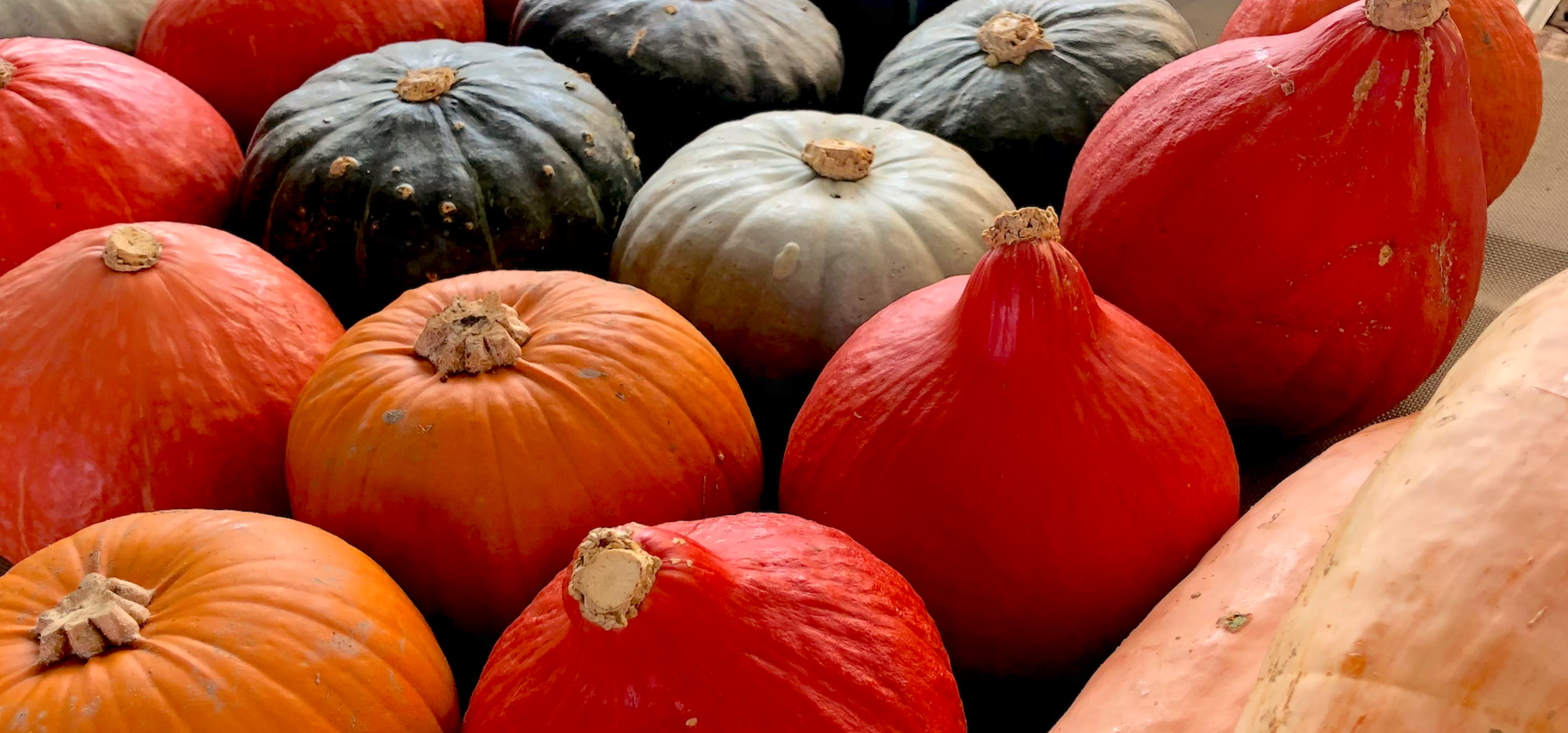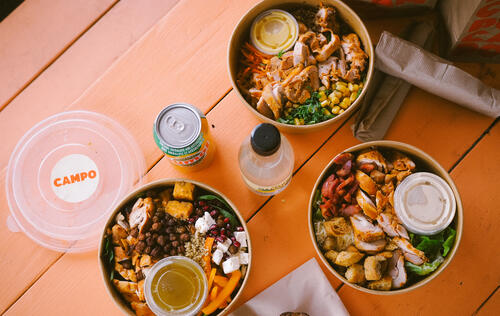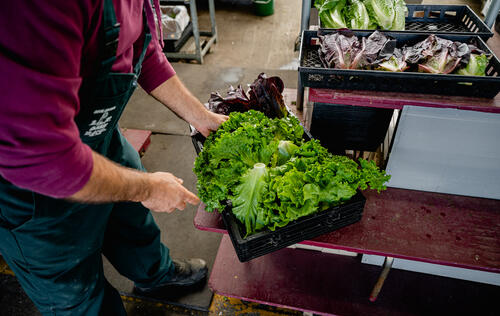Fall into the squash!

They've finally invaded the stalls of the Montreal Public Markets, creating a magnificent living tableau. Red, orange, or brown, rounded or long, small or giant, light or massive, cucurbits reveal their most beautiful aspects and allow us to imagine the wonderful dishes we'll create with them. But to turn ideas into action, especially when we're faced with less familiar squashes, here are some useful tips from the pros and some easy-to-make recipe ideas.
Do you often cook pumpkin or butternut squash in the fall? Great, they're delicious! But they're only a tiny fraction of the squashes that could end up on your plate. There are actually more than 10,000 varieties of squash around the world, including at least 300 found in Quebec. That's a lot of meal ideas!
A Brief Overview of a Large Family
Before you put on your apron, the very first thing to know about squash is that not all of them are good for eating. Some are only intended for decoration, and the smallest edible squashes are not easy to work with.
You should also know that there are five main groups of edible squash, each with its own flavor characteristics and culinary applications. Garden squashes (pumpkin, acorn squash, etc.), recognizable by their fibrous holes, are delicious grilled or stuffed. Pumpkins, or giant pumpkins (buttercup, sweet mama, etc.), have a thick, generous flesh that lends itself well to purées, cakes, and soups. Butternut squash, like the butternut squash, have a moister texture that can be grilled. On the rise, ayote squash, often found in Mexico or the southern United States, has a crispy flesh raw or rivals that of a potato when cooked. Finally, the fifth and final group on this list is the Siam squash, which is only found in the South and is unobtainable in Quebec.
Cutting, Cooking, and Freezing 101
With that in mind, here are some pro tips and tricks to help you make the most of squash season.
We reached out to Pascale Coutu, owner of La Courgerie in Lanaudière and author of several books on the subject, to guide us. And her first piece of advice is this: "Equip yourself! A peeler and a poorly sharpened knife work for carrots, but not for squash. With quality, properly sharpened equipment, your relationship with squash will completely change."
Now, how do you properly cut squash? Place the squash face down on a counter and cut it using all your weight, through the center and not the stem, which is much harder. Be sure to keep a cloth in your other hand to hold the squash in place and avoid cutting yourself.
Next comes the cooking process, which varies depending on how you'll use the squash. However, as is often the case, it's cooked on its own to make purée. This can be easily done in the oven with whole squash if they're small enough, or sliced for larger ones. You can even garnish them with herbs, spices, or oil at this stage. For soups, simply add milk or cream!
Be careful, however: just because a squash is larger doesn't mean it will take longer to cook. It's actually the thickness and density of the flesh that determines the cooking time. So, as soon as the flesh is tender, it's time to remove the squash from the oven. The skin will then peel off very easily, like peeling a banana. You can also opt for squashes whose skin can be kept and eaten, such as Delicata, Lady Godiva, Kakai, or Scheherazade. Also worth noting: always remove the stem before cooking, as it gives off a bad odor.
Are you also a fan of pumpkin seeds? Then be sure to dry them on a cloth in the open air or in the oven at a low temperature. Without this step, they will turn black and become inedible.
The last step after cooking: blend the cooked flesh in a food processor to obtain a smooth purée that can be used in many recipes. Simply portion them, freeze them, and then use them as needed and desired. “It is also possible to freeze grated raw squash, but you will need to keep the juice that will escape during thawing,” explains the specialist.
One, two, three… cook!
There are tons of squash recipes! This is confirmed by Marjolaine Beauregard of Potager Mont-Rouge, who creates many small dishes with the squash grown on her farm.
Like Pascale Coutu, the farmer links squash varieties to culinary techniques and specialties. So, where to start, Marjolaine? "Purifying squash or replacing a vegetable in a recipe with squash are good starting points because they allow us to familiarize ourselves with their taste and texture," she explains.
More specifically, the producer now draws our attention to lesser-known squashes, such as the Delicata, which has a potato-like flavor. "You can slice it into thin slices and sauté it with oil and spices." You can also cut it in half, remove the seeds, then stuff it with sausage meat and cheese, or even add an egg for brunch. It's delicious!"
There are also delicious solutions for other unusual squashes. For example, pumpkins go very well in smoothies. Mango squash, on the other hand, is apparently ideal for adding pureed squash to recipes for scones, breads, and muffins. The famous apple crumble, for its part, can be made with an acorn squash, cut in half and topped with apple slices, brown sugar, dried cranberries, a dash of maple syrup, and a little granola on top. "45 minutes in the oven, and you have a delicious dessert," confirms Marjolaine Beauregard.
But that's not all! Want to eat some unusual fries? Hubbard squash will be perfect. Crudités? The Pink Jumbo Banana will easily rival carrots. A plum sauce? The Lady Godiva will make it unforgettable. It's worth noting that plum sauce traditionally contains no plums, since it's made exclusively with squash.
Here's our final tip: visit the producers at Montreal's public markets; they'll be delighted to guide you. So, join us in the squash hunt this fall!




